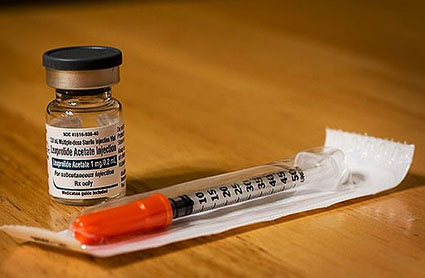by WorldTribune Staff, June 16, 2022
The suicide rate for transgender youth has increased in states where minors have access to hormones and puberty blockers without parental consent, according to new research.
“Starting in 2010, when puberty blockers and cross-sex hormones became widely available, elevated suicide rates in states where minors can more easily access those medical interventions became observable,” said Jay P. Greene, senior research fellow at Heritage’s Center for Education Policy, the study’s author.

The study, published on June 13, found that from 2010-20 the suicide rate spiked by 1.6 per 100,000 residents ages 12-23 in states where minors don’t need their parents’ permission to undergo routine medical care. That represents a 14% increase in the suicide rate in states with more lenient policies. Before 2010, the two groups of states “did not differ in their youth suicide rates,” the study said.
“Rather than being protective against suicide, this pattern indicates that easier access by minors to cross-sex medical interventions without parental consent is associated with higher risk of suicide,” Greene noted.
The results of the study run counter to the narrative being pushed in many American schools that preventing minors from undergoing medical gender transition increases their risk of suicide.
Ryan T. Anderson, president of the conservative Ethics and Public Policy Center, called the study “one of the best papers that has been produced so far on this issue.”
“Unfortunately, many parents are being told they have a choice between a living son or a dead daughter. They’re then being told that puberty-blocking drugs, cross-sex hormones and possibly even sterilizing surgeries are the only thing that will save their child’s life,” Anderson told The Washington Times. “These are entirely experimental, microscopically new, when you look at the timeline of human history.”
Alabama, Arkansas and Tennessee have passed laws banning gender-transition drugs and procedures for those under 18. A federal judge last month blocked parts of the Alabama law, which makes it a felony to provide such drugs to minors.
“The escalation of state policies that are harmful to LGBTQ people will only heighten and intensify experiences of rejection and discrimination and could lead to an increase in suicidal ideation,” said the Trevor Project and American Foundation for Suicide Prevention in a March 23 statement. “Whether it’s limiting conversations around the broad topics of gender identity and sexual orientation or making gender-affirming care for a trans teen a felony, our organizations recognize the challenges the LGBTQ community is facing at this time.”
According to the Heritage research, however, increased access to gender-transition therapies may be doing more harm than good.
“At a minimum, the results presented in this Backgrounder demonstrate that efforts to lower legal barriers for minors to receive cross-sex medical interventions do not reduce suicide rates and likely lead to higher rates among young people in states that adopt those changes,” said Greene.
“States should also adopt parental bills of rights that affirm that parents have primary responsibility for their children’s education and health, and that require schools to receive permission from parents before administering health services to students, including medication and gender-related counseling to students under age 18,” Greene added.
Dr. Debra Soh, a sex neuroscientist and author of “The End of Gender: Debunking the Myths About Sex and Identity in Our Society” noted in a June 10 op-ed for the Washington Examiner that the increase in the number of Americans who self-report as transgender or nonbinary is “further evidence of the trendiness and pervasiveness of gender ideology today. As my readers know, there is zero scientific evidence supporting the idea of nonbinary genders. There are two sexes and two genders, and transgender people simply identify as the opposite sex as opposed to their birth sex.”
Soh continued: “Young people are particularly incentivized to claim they are transgender or a gender other than male or female, especially if they are white or heterosexual, because it lends them credibility on the intersectionality scale. Latching on to some form of minority status, no matter how frivolously, allows a person to switch sides from being considered a genocidal oppressor to an oppressed ally.
“The best part about ‘nonbinary’ or ‘genderfluid’ identities is they are easily adopted, and no one is allowed to question their validity. For those who are looking to score sympathy points or gain social capital, third-gender identities are a relatively easy way to opt in. The fact that a larger percentage of 18- to 29-year-olds say they are ‘nonbinary’ than transgender speaks to this. I can’t say I’m surprised that more time spent within the halls of academia is associated with a deeper familiarity with this ideology. It’s also one thing if adults choose to endorse beliefs untethered to reality.”
“Most disturbingly,” Soh wrote, citing a Pew Research Center study, is that about 1 in 10 people surveyed “said they know a child under the age of 18 who identifies as transgender. This is not a rarity affecting only a small subset of the population anymore — it’s taken hold of an entire generation of children. Considering the high rates of desistence and rapid-onset gender dysphoria, this won’t end well.”
About . . . . Intelligence . . . . Membership
